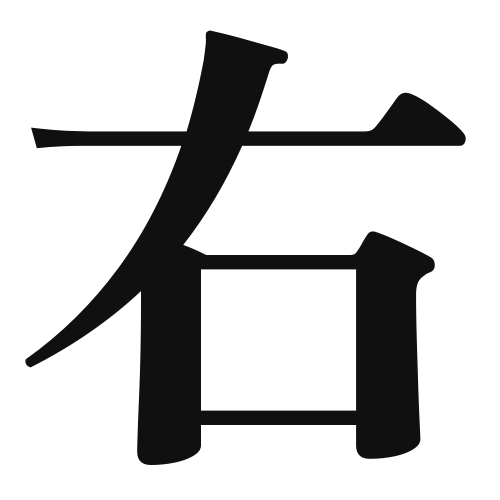1. Overview of Meaning
The kanji “右” (pronounced “migi”) means “right” in English. It refers to the direction opposite of left and is often used in various contexts, including navigation and orientation.
2. Formation and Radical
The kanji “右” is a phono-semantic compound, which means it combines both a phonetic and a semantic component. The left part of the character is a phonetic element, while the right part provides the meaning related to direction.
The radical of “右” is “口” (kuchi), which means “mouth.” This radical is often associated with speech or direction in various kanji.
3. Examples of Usage
Common words and phrases that include “右” are:
- 右側 (migigawa) – right side
- 右折 (usetsu) – right turn
Example sentences in daily conversation:
- 「右に曲がってください。」(Migi ni magatte kudasai.) – “Please turn right.”
- 「右側に座っている人は誰ですか?」(Migigawa ni suwatte iru hito wa dare desu ka?) – “Who is the person sitting on the right side?”
4. Synonyms and Antonyms
Similar kanji with related meanings include:
- 正 (sei) – correct, right (in terms of correctness)
Antonyms include:
- 左 (hidari) – left
5. Cultural and Historical Background
The concept of “right” has significant cultural implications in Japan, often associated with correctness and propriety. In traditional Japanese culture, the right side is considered more favorable.
Proverbs and idiomatic expressions include:
- 「右手に持つ」(Migite ni motsu) – “to hold in the right hand,” often symbolizing favor or preference.
